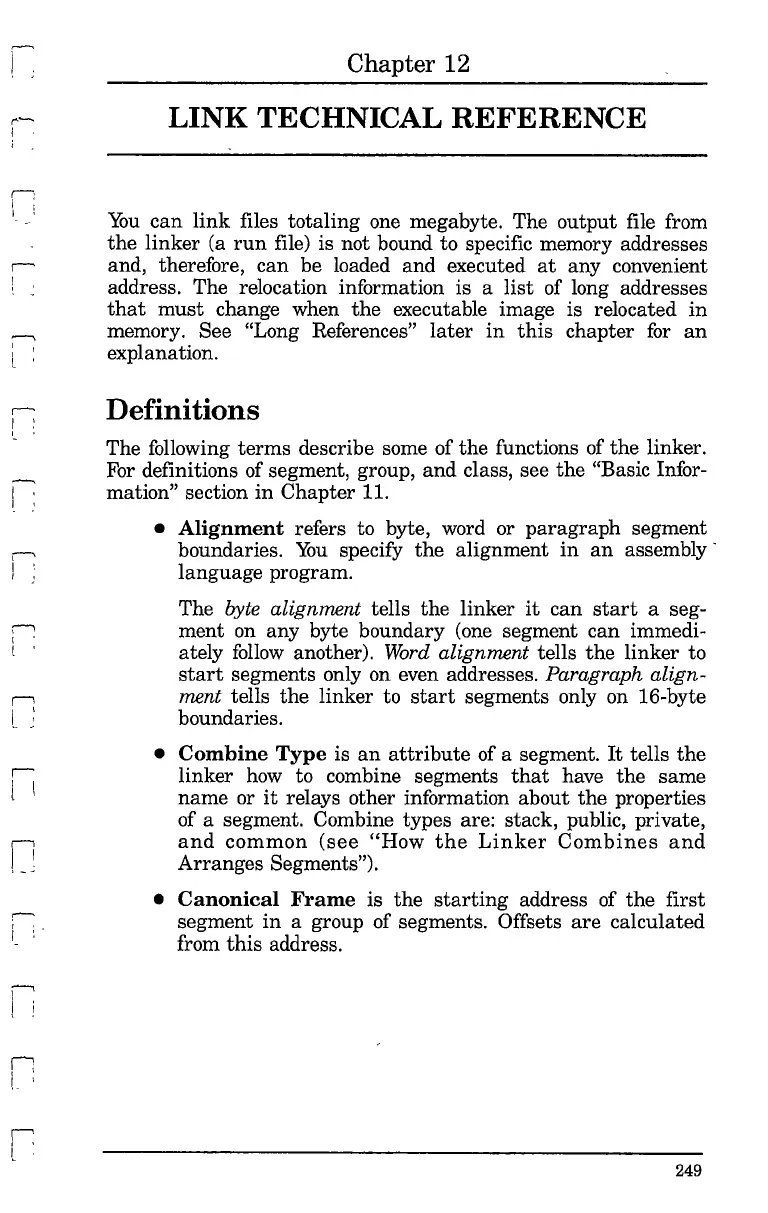r-,
l :
I :
---,
: '
L '
.--
I
~
I '
--.
I '
I '
r-'
I :
I ,
;--"1
I '
l '
r-
! I
1 1
r-
, "
I :
n
i ;
Chapter 12
LINK TECHNICAL REFERENCE
You
can
link
files totaling one megabyte. The
output
file from
the
linker (a
run
file) is not bound to specific memory addresses
and, therefore,
can
be loaded and executed
at
any convenient
address. The relocation information is a
list
of long addresses
that
must
change when
the
executable image is relocated
in
memory. See "Long References"
later
in
this
chapter
for
an
explanation.
Definitions
The following
terms
describe some of
the
functions of
the
linker.
For definitions of segment, group,
and
class, see
the
"Basic Infor-
mation" section
in
Chapter
11.
•
Alignment
refers to byte, word or
paragraph
segment
boundaries.
You
specify
the
alignment
in
an
assembly'
language program.
The
byte alignment tells
the
linker
it
can
start
a seg-
ment on any byte boundary (one segment can immedi-
ately
follow
another).
Word
alignment tells
the
linker to
start
segments only on even addresses. Paragraph align-
ment
tells
the
linker to
start
segments only on 16-byte
boundaries.
• Combine
Type
is
an
attribute
of a segment.
It
tells
the
linker how to combine segments
that
have
the
same
name or
it
relays other information about
the
properties
of a segment. Combine types are: stack, public, private,
and
common
(see
"How
the
Linker
Combines
and
Arranges
Segments").
•
Canonical
Frame is
the
starting
address of
the
first
segment
in
a group of segments. Offsets
are
calculated
from
this
address.
249
